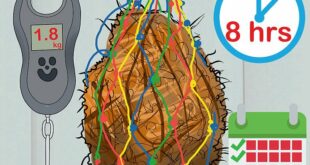Epoch Times
November 12, 2013

Wi-Fi can now be harnessed and converted into energy; the health effects of the ubiquitous signals are still a cause for concern among many.
A high school project threw oil on the burning international debate about the adverse health and environmental effects of Wi-Fi radiation.
After 12 days of Wi-Fi radiation from two routers, garden cress seeds turned out stunted, dead, or mutated (showing genetic defects not present before the trial). By contrast, a control group of 200 seeds with the same conditions but no Wi-Fi radiation flourished. The study was conducted by students at Hjallerup high school in Denmark and made headlines in May.
In 2009, Austrian Health insurance company AUVA released a study linking Wi-Fi to adverse health effects, including cancer, reduced fertility, decreased ability to concentrate, and disturbed sleep. AUVA showed radiation levels well below the standard limits could impact the central nervous system, immune system, and protein synthesis.
The effects mostly occur in metabolically active cells (growing cells), which means children are at a higher risk.
The body uses electromagnetic signals to communicate between cells, organs and tissues. The radiation overlaps and interferes with the body’s internal communication, hence the havoc.
Many schools worldwide have adopted anti-Wi-Fi policies, and many countries—France, Canada, and India, for example—and have adopted anti-Wi-Fi measures and laws. The European Union passed an anti-WIFI resolution in May 2011.
 Daily Stormer The Most Censored Publication in History
Daily Stormer The Most Censored Publication in History


